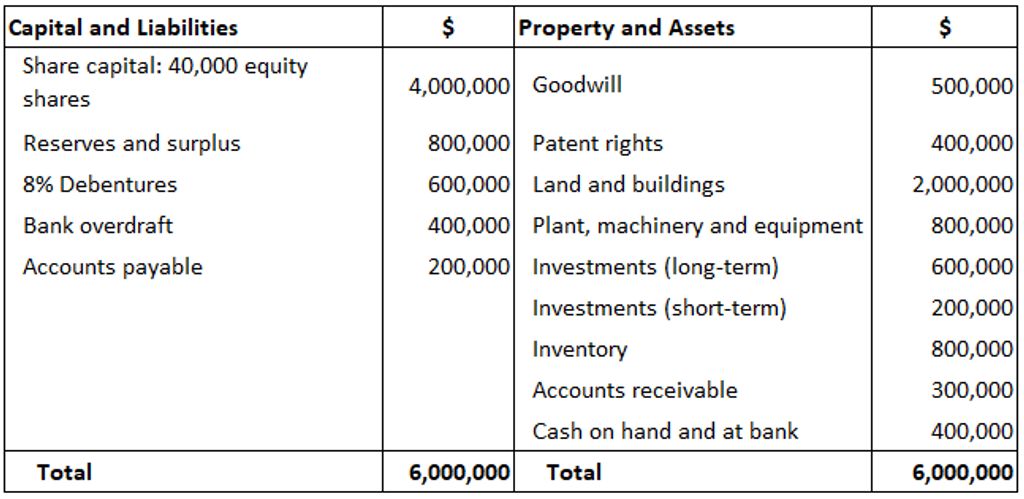Investment accounting is a crucial aspect of financial management that involves tracking, valuing, and reporting on investments. Understanding the key concepts and best practices in investment accounting is essential for accurate financial reporting and decision-making. In this article, we will explore the importance of investment accounting, key concepts such as valuation methods and fair value accounting, and best practices including maintaining accurate investment records and implementing robust internal controls. Here are the key takeaways from this article:
Key Takeaways
- Investment accounting is essential for accurate financial reporting and decision-making.
- Valuation methods, such as cost method and fair value method, are used to determine the value of investments.
- Fair value accounting requires investments to be reported at their current market value.
- Impairment of investments occurs when their value declines below their carrying amount.
- Best practices in investment accounting include maintaining accurate investment records, implementing robust internal controls, and regularly reconciling investment portfolios.
The Importance of Investment Accounting

Understanding the Role of Investment Accounting
Investment accounting plays a crucial role in financial management, helping organizations navigate complexities, capitalize on opportunities, and ensure sustainable growth. It involves making decisions about significant investments, allocating financial resources strategically, and evaluating potential opportunities for the best returns. For instance, imagine a manufacturing company considering an expansion into a new market. Thoroughly analyzing financial statements allows them to assess the feasibility of the investment and make informed decisions. By prioritizing low investment fees and maintaining a long-term perspective, organizations can maximize returns and mitigate risks. With reasonable expectations and disciplined execution, investing provides a means to steadily build wealth. By tuning out short-term noise and adhering to fundamentals, investors give themselves the best chance at investment gains over their lifetime.
Benefits of Effective Investment Accounting
Adopting cutting-edge data analysis, forecasting, and budgeting tools can offer real-time insights into financial performance, facilitating quicker and more accurate decision-making. Technologically advanced cash management and investment operations improve accountability and transparency inside the company while streamlining financial procedures. Diversifying investment exposures is a crucial tactic for minimizing risk and maximizing value creation. CEOs and CFOs must look into ways to diversify their investment portfolios. In the current environment where risk-free cash and low investment fees are prioritized to maximize returns, it is important to maintain a long-term perspective rather than reacting to daily market swings. By tuning out short-term noise and adhering to fundamentals, investors give themselves the best chance at investment gains over their lifetime.
Challenges in Investment Accounting
Investment accounting can present several challenges that organizations need to address. One of the key challenges is the management of investment in a single power plant entity. This type of investment requires careful monitoring and evaluation to ensure its profitability and mitigate risks. Organizations must consider factors such as regulatory compliance, operational efficiency, and market conditions when dealing with this type of investment.
To overcome this challenge, organizations can implement the following strategies:
- Conduct thorough due diligence before investing in a single power plant entity to assess its financial viability and potential risks.
- Develop a comprehensive risk management plan that includes contingency measures to address any unforeseen issues.
- Regularly monitor the performance of the investment and make necessary adjustments to optimize returns.
By addressing the challenges associated with investment in a single power plant entity, organizations can enhance their investment accounting practices and maximize the value of their portfolios.
Key Concepts in Investment Accounting

Valuation Methods for Investments
Valuation methods for investments play a crucial role in determining the fair value of assets. These methods help investors assess the worth of their investments and make informed decisions. One commonly used valuation method is the average cost basis method. This method calculates the average cost of acquiring investments over time, taking into account all purchases and sales. By using this method, investors can determine the cost basis of their investments and track their performance.
Another important valuation technique is the market approach. This approach uses prices and information from market transactions involving similar assets or liabilities. It provides a benchmark for determining the fair value of investments based on market data.
In addition, the income approach is a valuation technique that converts future amounts, such as cash flows or income and expenses, into a single current value. This approach helps investors estimate the fair value of investments based on market expectations.
When valuing investments, it’s essential to consider the cost approach as well. This technique reflects the amount required to replace the service capacity of an asset. It takes into account the current replacement cost, providing an alternative perspective on the value of investments.
To summarize, valuation methods for investments, including the average cost basis method, market approach, income approach, and cost approach, are essential tools for determining the fair value of assets and making informed investment decisions.
Fair Value Accounting
Fair value accounting is one of the most complex and judgmental areas of accounting. It involves measuring the price that would be received to sell an asset or paid to transfer a liability under current market conditions. The fair value of an asset or liability is determined using the assumptions that market participants would use when pricing the asset or liability, assuming that market participants act in their best economic interest. This ensures that the measurement is based on the investor’s intent. Fair value accounting provides consistency and comparability in financial reporting.
Impairment of Investments
When it comes to investment accounting, one key concept to understand is the impairment of investments. This refers to a situation where the value of an investment decreases significantly and is unlikely to recover. It is important for investors to be aware of potential impairments and take appropriate actions to address them.
There are several factors that can contribute to the impairment of investments. Economic downturns, changes in market conditions, and poor financial performance of the investee company are some common causes. It is crucial for investors to regularly assess the value of their investments and identify any signs of impairment.
To manage impairments effectively, investors should consider the following best practices:
- Conducting regular impairment tests: Regularly evaluate the carrying value of investments and compare it to their fair value. This helps identify potential impairments and determine the appropriate accounting treatment.
- Seeking professional advice: In complex situations, it may be beneficial to consult with accounting professionals or valuation experts to assess the impairment and determine the best course of action.
- Documenting impairment assessments: Maintain detailed records of impairment assessments, including the rationale behind the impairment decision and any supporting evidence. This documentation is important for audit purposes and ensures transparency in financial reporting.
By understanding the concept of impairment of investments and implementing best practices, investors can effectively manage and address potential impairments, safeguarding their investment portfolios.
Best Practices in Investment Accounting

Maintaining Accurate Investment Records
Maintaining accurate investment records is essential for effective investment accounting. It allows investors to track their investments, monitor performance, and make informed decisions. One important aspect of maintaining accurate records is budget setting. By setting a budget, investors can allocate their resources strategically and ensure that they are investing within their means. This helps to prevent overspending and minimize the risk of financial instability.
To effectively maintain accurate investment records, investors can implement the following best practices:
- Consistent Documentation: Keep detailed records of all investment transactions, including purchase and sale dates, transaction amounts, and any associated fees. This documentation provides a clear audit trail and helps to ensure accuracy in financial reporting.
- Regular Reconciliation: Regularly reconcile investment statements with internal records to identify any discrepancies or errors. This helps to maintain the integrity of the investment portfolio and ensures that all transactions are accounted for.
- Automated Tracking: Utilize technology and software solutions to automate the tracking of investment transactions. This reduces the risk of manual errors and streamlines the record-keeping process.
By following these best practices, investors can maintain accurate investment records and enhance the effectiveness of their investment accounting processes.
Implementing Robust Internal Controls
Implementing robust internal controls is crucial for ensuring the integrity and accuracy of investment accounting processes. By establishing effective controls, companies can minimize the risk of errors, fraud, and misstatements in financial reporting. These controls provide a framework for monitoring and safeguarding assets, ensuring compliance with regulations, and maintaining the confidentiality of sensitive information.
To implement robust internal controls, small company CEOs and CFOs should consider the following:
- Segregation of Duties: Assigning different responsibilities to multiple individuals helps prevent conflicts of interest and reduces the likelihood of fraudulent activities.
- Regular Audits: Conducting periodic internal and external audits can identify control weaknesses and provide recommendations for improvement.
- Documentation and Policies: Maintaining comprehensive documentation and clear policies ensures consistency and accountability in investment accounting practices.
- Training and Education: Providing ongoing training and education to employees enhances their understanding of internal controls and promotes a culture of compliance and ethical behavior.
By implementing these best practices, small companies can strengthen their investment accounting processes and mitigate risks, ultimately contributing to the overall success and growth of the organization.
Regular Reconciliation of Investment Portfolios
Regular reconciliation of investment portfolios is a crucial practice in investment accounting. It involves comparing the recorded values of investments with their actual market values to ensure accuracy and identify any discrepancies. This process helps investors and accounting professionals to monitor the performance of their investments and make informed decisions.
To effectively reconcile investment portfolios, it is important to follow these steps:
-
Review investment transactions: Carefully examine all investment transactions, including purchases, sales, and any changes in market values. This ensures that all transactions are accurately recorded and reflected in the portfolio.
-
Verify investment valuations: Compare the recorded valuations of investments with their fair market values. This helps identify any discrepancies and ensures that the portfolio reflects the true value of the investments.
-
Investigate and resolve discrepancies: If any discrepancies are found during the reconciliation process, it is important to investigate and resolve them promptly. This may involve contacting brokers or investment managers to clarify any discrepancies and make necessary adjustments.
-
Document the reconciliation process: Keep detailed records of the reconciliation process, including the steps taken, the findings, and any actions taken to resolve discrepancies. This documentation serves as a reference for future audits and helps maintain transparency and accountability.
Regular reconciliation of investment portfolios is essential for accurate financial reporting and decision-making. It provides investors with confidence in the integrity of their investment records and helps identify any potential errors or fraudulent activities. By following best practices in reconciliation, investors can ensure that their investment portfolios are up-to-date and aligned with their financial goals.
In Conclusion
Understanding investment accounting is crucial for individuals and organizations looking to optimize their operations and make informed financial decisions. By grasping the key concepts and best practices outlined in this article, you can navigate the complex world of accounting with confidence. Whether you’re a finance professional or simply interested in personal banking, having a solid understanding of accounting will empower you to make better financial choices. So, dive into the recommended accounting books mentioned in this article and enhance your knowledge today!



